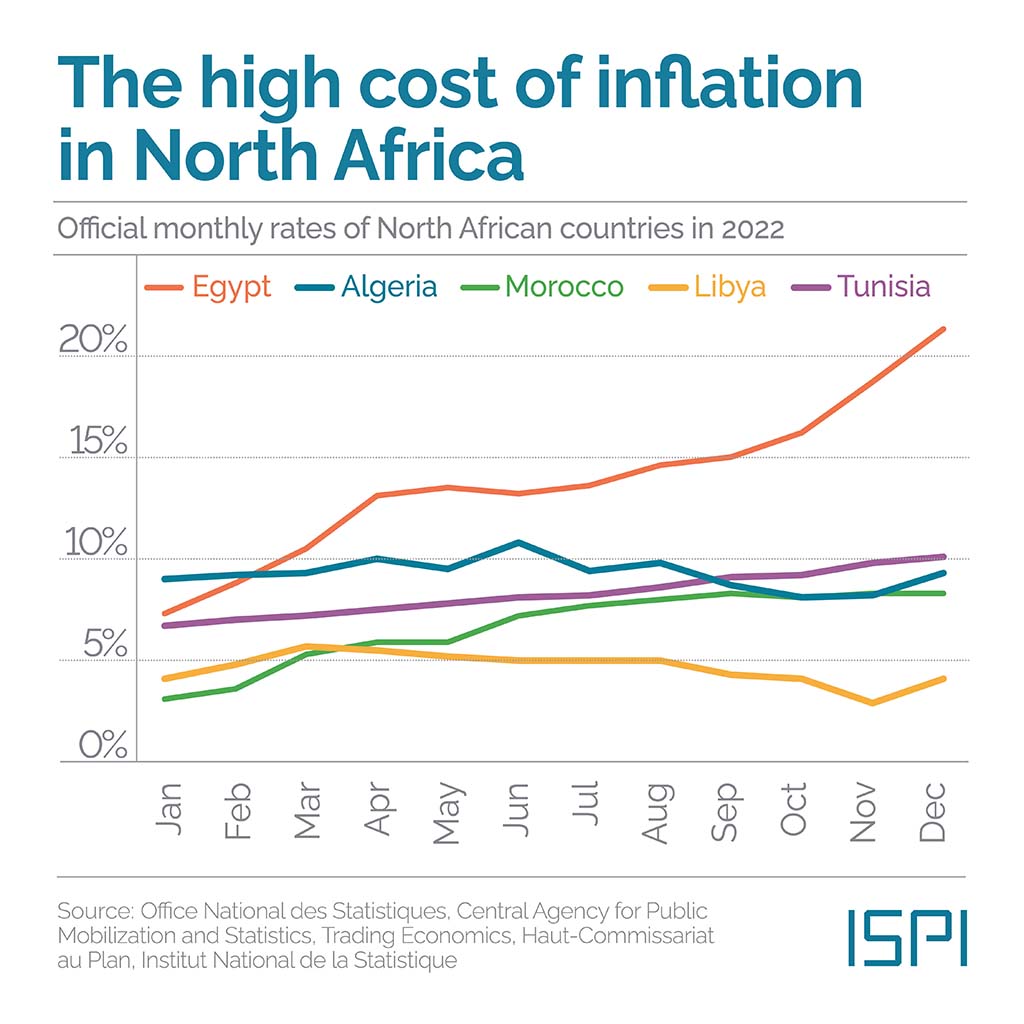Report on Social Security Administration’s New Verification Policy and its Alignment with Sustainable Development Goals
A new policy by the Social Security Administration (SSA) is set to alter how beneficiaries access fundamental services. The policy mandates online or in-person identity verification for tasks previously handled by telephone, raising significant concerns regarding its impact on vulnerable populations and its alignment with the United Nations Sustainable Development Goals (SDGs).
Policy Overview and Procedural Changes
Scope of New Requirements
The SSA is expanding its online authentication protocol to combat fraud. This change will require beneficiaries to use their online “mySocialSecurity” accounts or visit a field office for the following services:
- Address changes
- Benefit claim status requests
- Benefit verification letters
- Tax statements
This policy follows a similar initiative that already prohibits changing direct deposit information over the phone, a measure expected to add 1.9 million people to field offices annually.
Projected Implementation and Impact
The agency intends to implement the change by August 18, pending approval. A regulatory filing indicates the SSA anticipates that 3.4 million individuals will be unable to use the online system and will need to visit a field office in person each year. This represents a projected 17% increase in field visits.
Analysis of Impacts on Sustainable Development Goals (SDGs)
SDG 10: Reduced Inequalities
The policy poses a direct challenge to SDG 10 by creating significant access barriers that disproportionately affect certain demographics.
- The Elderly and Persons with Disabilities: Many individuals in these groups lack the digital literacy or access to technology required for online verification.
- Rural Populations: Those in rural areas face greater difficulty with “long, difficult, or costly trips to field offices,” exacerbating the urban-rural divide in service access.
- The Digital Divide: The mandate effectively penalizes those without reliable internet or technological proficiency, deepening inequalities in access to essential government services.
SDG 1 (No Poverty) and SDG 3 (Good Health and Well-being)
The new requirements threaten the financial and physical well-being of beneficiaries, undermining key development goals.
- Risk to Financial Security (SDG 1): Social Security is a primary defense against poverty for millions. Creating obstacles to managing benefits, such as updating an address for payment delivery, can jeopardize this crucial economic lifeline.
- Impact on Health and Well-being (SDG 3): Forcing elderly or disabled individuals to navigate complex technology or undertake strenuous travel can cause significant stress and physical hardship. The need to take time off work for appointments also impacts economic well-being.
SDG 16: Peace, Justice, and Strong Institutions
The policy’s implementation and rationale raise questions about the SSA’s commitment to being an effective, accountable, and inclusive institution as outlined in SDG 16.
- Institutional Effectiveness: With current appointment wait times at 35 days amid staff reductions, the projected influx of 3.4 million additional visitors threatens to overwhelm field offices, reducing the institution’s overall effectiveness.
- Evidence-Based Policy: Critics, including the Center on Budget and Policy Priorities, note there is no documentation that routine phone transactions are a significant source of fraud, questioning the evidence base for such a disruptive policy.
- Accountability and Transparency: The SSA has provided conflicting information, with a spokesperson claiming the process is “optional” while regulatory filings clearly state an expected number of “Respondents who decline to use” the online system and must visit an office. This lack of clarity undermines institutional accountability.
Conclusion
While the stated goal of the Social Security Administration’s new verification policy is fraud prevention, its implementation threatens to create severe hardships for the nation’s most vulnerable citizens. The policy is in direct conflict with the principles of several Sustainable Development Goals, particularly those focused on reducing inequalities (SDG 10), ensuring well-being (SDG 3), eliminating poverty (SDG 1), and building strong, inclusive institutions (SDG 16). Advocacy groups urge the SSA to reconsider the measure to avoid disenfranchising the very people it is mandated to serve.
Analysis of SDGs, Targets, and Indicators
-
Which SDGs are addressed or connected to the issues highlighted in the article?
- SDG 1: No Poverty. The article discusses changes to the Social Security Administration, a key social protection system in the US. Hindering access to these benefits for senior citizens and people with disabilities directly impacts their financial security and relates to the goal of ending poverty.
- SDG 10: Reduced Inequalities. The new policy disproportionately affects vulnerable groups, including “senior citizens,” “people with disabilities,” and those in “rural areas.” By creating technological and logistical barriers, the policy increases inequality in access to essential public services.
- SDG 16: Peace, Justice and Strong Institutions. The article examines the effectiveness and inclusivity of a major public institution, the Social Security Administration. The policy change and the resulting criticism from advocacy groups raise questions about whether the institution is “effective, accountable and transparent” and whether its decision-making is “responsive” and “inclusive.”
-
What specific targets under those SDGs can be identified based on the article’s content?
- Target 1.3: “Implement nationally appropriate social protection systems and measures for all, including floors, and by 2030 achieve substantial coverage of the poor and the vulnerable.” The article directly concerns a policy change within a national social protection system (Social Security) that could reduce its accessibility and effective coverage for vulnerable populations like the elderly and disabled.
- Target 10.2: “By 2030, empower and promote the social, economic and political inclusion of all, irrespective of age, sex, disability…”. The policy risks the social and economic exclusion of older persons and persons with disabilities by making it harder for them to manage their benefits due to reliance on “complicated technology” or “long, difficult, or costly trips to field offices.”
- Target 10.3: “Ensure equal opportunity and reduce inequalities of outcome…”. While the policy is not explicitly discriminatory, it creates an inequality of outcome by imposing a greater burden on those who are less tech-savvy or have mobility issues, primarily seniors and people with disabilities.
- Target 16.6: “Develop effective, accountable and transparent institutions at all levels.” The article questions the effectiveness of the Social Security Administration’s new policy, noting that it will significantly increase the burden on field offices, which are already understaffed and have long wait times. The fact that the agency had to “walk back a measure” previously also speaks to issues with institutional effectiveness.
- Target 16.7: “Ensure responsive, inclusive, participatory and representative decision-making at all levels.” The concerns raised by AARP and the Center on Budget and Policy Priorities suggest that the decision-making process for this policy was not responsive to or inclusive of the needs of the people it most affects.
-
Are there any indicators mentioned or implied in the article that can be used to measure progress towards the identified targets?
- Number of people forced to use in-person services: The article states that the agency “expects 3.4 million people will need to go to field offices annually” for tasks they could previously do by phone. A separate policy is “expected to send an additional 1.9 million people to field offices annually.” This directly measures the reduced accessibility of services.
- Service wait times: The article mentions that it “currently takes 35 days to get an appointment at a Social Security field office” and that people may have to “wait on hold for possibly hours” on the phone. These are direct indicators of institutional inefficiency and the burden placed on citizens.
- Increased burden on citizens: An estimate suggests the new policies will “increase field visits by 17%, requiring beneficiaries to spend 3 million hours driving to offices to complete their transactions.” This quantifies the negative impact on the public.
- Disproportionate impact on specific groups: The article explicitly identifies the groups most affected as “older Americans, especially those in rural areas,” and “people with disabilities.” This serves as a qualitative indicator for measuring inequality of access (Target 10.2).
Summary Table of SDGs, Targets, and Indicators
| SDGs | Targets | Indicators |
|---|---|---|
| SDG 1: No Poverty | 1.3: Implement nationally appropriate social protection systems and measures for all… and achieve substantial coverage of the poor and the vulnerable. |
|
| SDG 10: Reduced Inequalities |
10.2: Empower and promote the social, economic and political inclusion of all, irrespective of age, disability…
10.3: Ensure equal opportunity and reduce inequalities of outcome… |
|
| SDG 16: Peace, Justice and Strong Institutions |
16.6: Develop effective, accountable and transparent institutions at all levels.
16.7: Ensure responsive, inclusive, participatory and representative decision-making at all levels. |
|
Source: cnn.com







